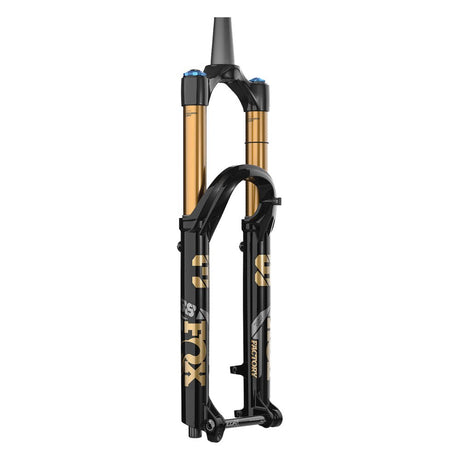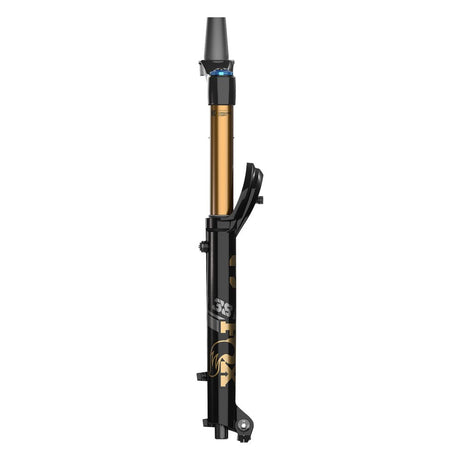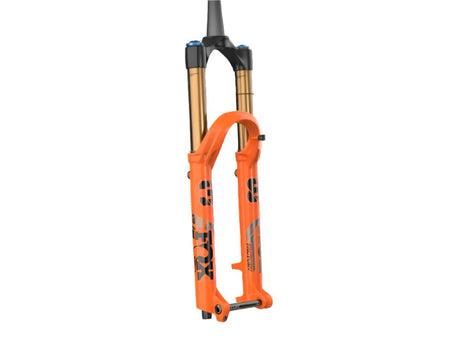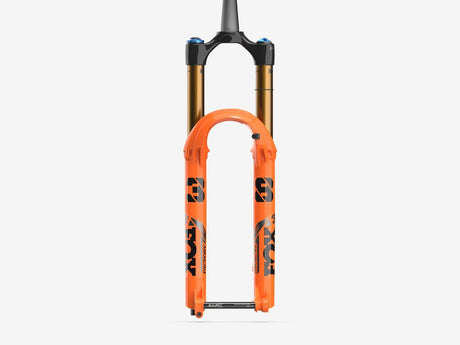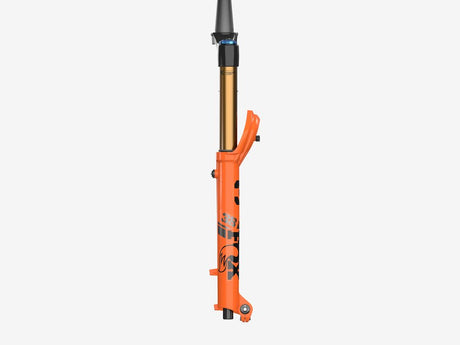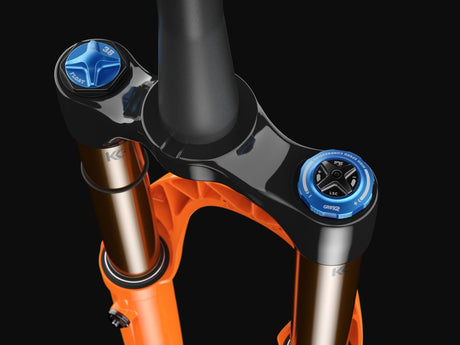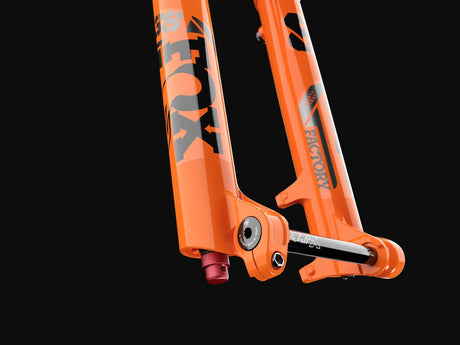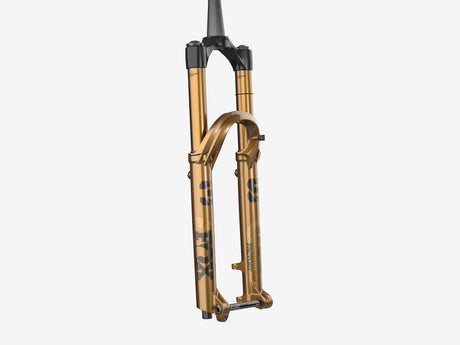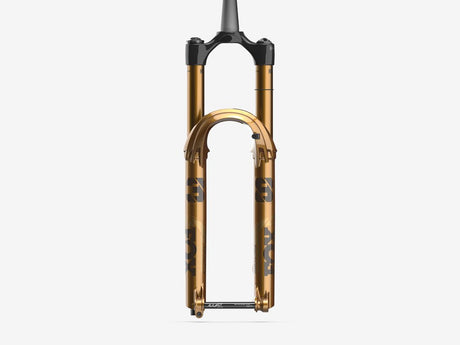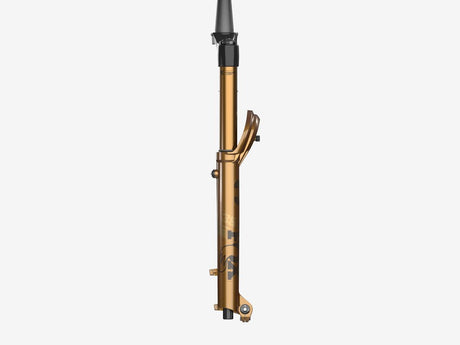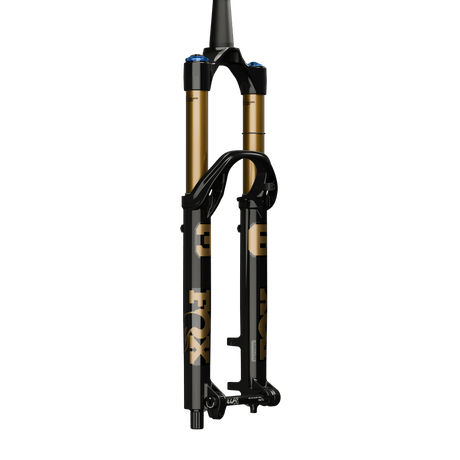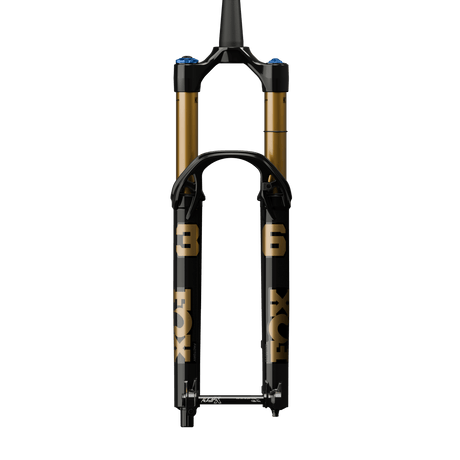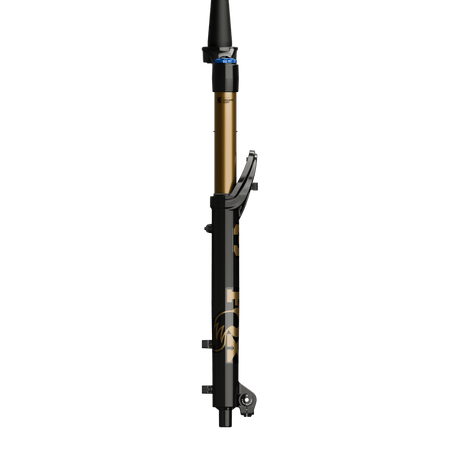Watch this video or read the blog post below:
Fox certainly shook things up in the mountain bike world when they released the 38. It’s thick, it’s burly, it’s stiff. However, this new fork overshadowed the already awesome Fox 36 which is still an amazing fork which should absolutely be considered when either upgrading your current fork or building a new bike.
So which fork is best for you? The Fox 36 or 38?
Keep reading, and we’ll help you figure that out.
INTRO
I’ve spent quite a bit of time on both the Fox 36 and 38. Now first thing’s first, both the newest revision of the Fox 36 and the all new Fox 38 are amazing, top shelf suspension products that offer a ridiculous amount of performance and features. Both forks offer tremendous amounts of traction and support while smashing through roots, rocks and whatever else is in your way. But before we talk about the difference between both of these forks while riding, let’s do a quick overview of both of these bad boys.
OVERVIEW
For years, the 36 was the burliest single crown fork Fox offered, but as enduro racing keeps getting more popular and long travel bikes continue to become more capable pedaling uphill, the need for super stiff single crown forks for long travel trail bikes has increased.
Fox’s solution to this is the 38.
From a distance, both of these forks look identical. But closer up, you’ll notice that the 38 just looks a bit more robust with it’s thicker stanchions and chassis. The names say everything: The Fox 36 has 36mm diameter stanchions and the Fox 38 has, you guessed it, 38mm diameter stanchions. Also the 38 has an elliptical steer tube with more material on the front and rear of the inside of the steer tube, whereas the 36 has a standard round steer tube. These factors mean the 38 is 17% stiffer fore aft and 38% stiffer torsionally compared to the 36.
Both forks are offered in a few different models like the Performance Series and Performance Series Elite versions with black anodized stanchions, or the top tier Factory series which is fully loaded with features and wrapped in that bling bling Kashima coating. Both forks also have different options for dampers like the FIT4, GRIP or, our favorite, GRIP2 depending on the model you choose.
For the sake of comparing apples to apples, and the sheer fact that we think the riding characteristics of the fork chassis themselves should be your deciding factor between both options, we’re going to use the Factory 36 GRIP2 and Factory 38 GRIP2 for this comparison.
So in a nutshell, the 38 is the stiffer, burlier big brother of the 36. Alright, now that we’re on the same page, let’s chat about the differences of both forks on the trail.
ON-TRAIL DIFFERENCES
After riding the 36 for several years I’ve gotten pretty used to how it feels and behaves on the trail, and it’s personally been my favorite fork as of late. It’s stiff, it’s smooth, the GRIP2 damper is freaking amazing, and I have traction for days. Then I was super excited when Fox released the 38, so I put one on my bike and hit the trails expecting an even stiffer fork to make my bike feel even more like a downhill bike. Well, I got exactly that and the 38 is noticeably stiffer than the 36 right off the bat.
Here in the Pacific Northwest, we have steep, gnarly descents and high speed chunk which I love to smash through as fast as possible. My main bike is a Devinci Spartan which has 165 millimeters of rear travel, a 63.5 degree head tube angle, and a 170 millimeter fork up front which means this thing prioritizes the downhill. I’m running a mullet wheel setup, so I actually have the fork set at 160 millimeters to keep the geometry how I like it.
Having the 38 up front, I 100% feel like I can ride a bit harder than with the 36 due to the increased stiffness. You can bomb through everything just a bit harder, giving you a bit more confidence when things get rowdy. Also, it kind of just helps you ride more like an idiot since I’m not as concerned with casing jumps or landing sideways as much. You can just send it, land to flat, and ride away calm and composed. Could I do that with the 36? Of course! But with the 38, I just feel a bit more cradled since the extra stiffness means less fork flex to work against on harsh landings.
Also, the 38 feels a bit more smooth than the 36 when riding through rough stuff at high speeds which is one of my favorite characteristics. The increased stiffness of the 38 reduces binding since the stanchions aren’t flexing as much, causing less friction against the bushings in the lower legs. The 38 really just feels like a single crown downhill fork that you can point and shoot through the roughest shit and stay super composed and comfortable.
So after spending several weeks shuttling my Spartan with the 38, I took out my second bike (which is a shop demo bike but it’s all set up for me and basically my second bike) a Devinci Troy 29. This bike has 140 millimeters of rear travel, a 65.5 degree head tube angle, and a 160 millimeter fork up front so this bike is more of an all mountain bike. It goes uphill faster and carries more speed than my Spartan, but will be a bit less stable and capable on the downhills. This Troy is setup with a Fox 36, and this is really where I feel like this fork shines. The 36 weighs a bit less than the 38, which comes in handy when I’m on the gas uphill for a long time. And on the downhill, this bike’s geometry and rear wheel travel makes it carry speed and spin up quickly. All around, this bike is fast and nimble.
The 36 up front just matches this bike’s personality better than a 38 would.
Why? Well, I would say that the 36 is in no way holding back this bike for how it’s meant to be ridden. I’m not expecting to go lightning speeds through steep, rough sections with the Troy like I would with my Spartan. But what I am expecting, is a decently lightweight bike that can pedal up and around all day, with a very poppy and spritely feel on the downhill. With the Spartan, I’m expecting a bike that pedals uphill pretty alright, but descends like a downhill bike.
So while riding the Troy like it’s meant to be ridden, the 36 is not holding back this bike and I don’t feel as if a 38 will help me ride much faster or more controlled on the downhill. However, while riding my Spartan how it’s meant to be ridden with a 36 on it, I felt like the front end could use a little more stiffness and support since I ride that bike on steeper, more aggressive trails, and having a 38 on the downhill focused Spartan does help me ride faster and more controlled pointed downhill compared to a 36.
Alright, that’s just how the two forks felt to me on the trail, but everyone isn’t me. Next let’s actually figure out if the 36 or 38 is best for you.
WHICH IS BEST FOR YOU?
There are 2 factors we use to help determine which fork is the one for you, which we’ll work through step by step.
Factor One: How much travel are you going to run on your fork? The 36 can be set to 130, 140, 150, 160 or 170 millimeters. The 38 can be set to 150, 160, 170 or 180 millimeters. See how the 38 is only able to run at longer travels? This is because the more travel your fork has, the longer your fork physically gets. And the longer the fork, the more leverage the trail has to tug on your fork, causing flex. At shorter travel options, the 36 is plenty stiff since there isn’t a ton of leverage. However, if you’re running a longer travel fork, there’s more leverage and a stiffer fork is required to resist flex.
So if you need a stiff fork for a trail bike running 130 or 140 millimeters up front, then the 36 is your only option. And if you have a long travel enduro rig that warrants a 180 millimeter fork up front, then the 38 is your only option. Easy right? Well, we do have this overlap where the 36 and 38 both can be run at 150, 160 or 170 millimeters of travel.
Factor Two: How much do you weigh and how aggressive are you riding? Let’s go through each travel option and take into effect how much you weigh when fully geared up and how aggressive you’re riding to determine which is best for you.
So if you’re running a 150 millimeter fork up front, you’ll most likely be better suited with a 36. However, if you are on the heavier side of riders, above around 230 pounds, or are riding super crazy aggressive, then you may see the benefits of the 38’s increased stiffness and resistance to flexing.
Then we have 160 millimeters, where you’ll be right on the fence for either forks as it’s a pretty neutral fork length. I’m running 160mm in both my 36 and 38. Like I said before, the 36 is better suited on my all-mountain bike which I’m focusing on both the pedaling and downhill performance with, while the 38 is better suited on my enduro bike which I’m primarily focusing only on the downhill performance. I’m not riding super crazy aggressive on the all mountain bike, so the 36 is definitely the better option for that setup. But on my enduro bike, I’m riding much gnarlier trails, so the 38 is a much better option. So if you’re at 160mm of travel up front, and not riding super crazy aggressive, go with the 36 as the added stiffness isn’t worth the extra weight of the 38. But if you are riding crazy aggressive, go with the 38. The heavier weight fork is well worth the performance advantages you’ll feel on the trail. Or, if you’re just a heavier rider, then go with the 38 as you’ll greatly appreciate the increased stiffness to better support you on the trail.
So now onto 170 millimeters, which is a bit easier. We really think the sweet spot of the Fox 38 is in 170 and 180 millimeters of travel, so we would generally recommend the Fox 38 if you’re going to run a 170 millimeter fork on the front of your bike. With this much travel up front, you’re probably riding a bike with aggressive geometry meant to prioritize going downhill. If so, then the thick boy 38 will best help you ride through whatever nasty terrain you can find. However, the Fox 36 might be a better option for you at this travel under two circumstances: if you’re a super lightweight rider under about 140 pounds, or you just so happen to have a long travel bike that you aren’t riding aggressively whatsoever, then the lighter weight of the Fox 36 might be a better option for you as you may not see the benefits of the stiffer 38.
So in a nutshell, at 130 or 140 millimeters of travel your only option is the 36. At 150 millimeters you’ll most likely be best paired with the 36 unless you’re a heavier rider or riding super crazy aggressive. At 160 millimeters, the 36 is better if you’re a very lightweight rider or not riding super aggressive, and the 38 is better if you’re a heavier rider or riding super crazy aggressive. At 170 millimeters, the 38 is going to be the better choice unless you’re a super lightweight rider or not riding aggressively whatsoever. At 180 millimeters, the Fox 38 is your only choice as the Fox 36 maxes out at 170 millimeters.
Also, you probably noticed I touched on weight differences on the two forks but didn’t say any numbers.
Well, we saved this for last since we would rather see you choose your fork based on stiffness and riding characteristics to best match the fork you need rather than just saving grams. The 38 weighs 250 grams more than the 36. So yes, the 38 is just over half a pound heavier than the 36 but we extremely encourage you to leave weight off the table when picking between both forks as that small weight penalty is nothing compared to the advantages of the increased stiffness and control of the 38.
Thank you for joining us for our comprison between the Fox 36 and 38!

